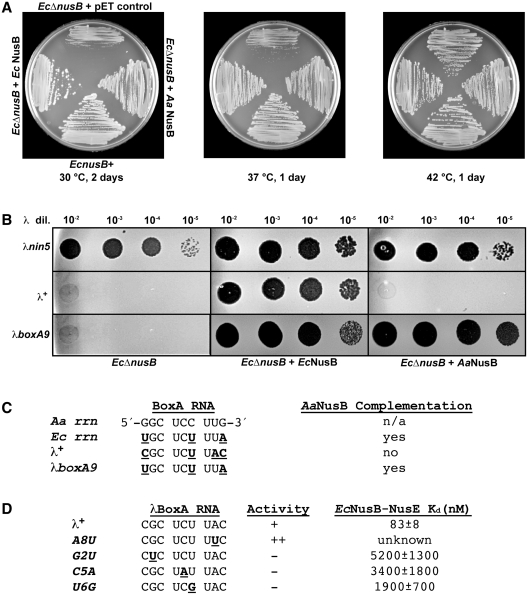Figure 3.
Complementation by AaNusB in E. coli is BoxA-sequence dependent. (A) Growth complementation assay of EcΔnusB cells with NusB expressed from plasmid DNA. The EcΔnusB cells were transformed with plasmids expressing EcNusB (pAB47), AaNusB (pKM772) or with the control pET vector. The growth of transformants was measured by incubating cells on L medium containing 50 µg/ml ampicillin at 30°C for 2 days, or at 37 or 42°C for 1 day (Supplementary Table S1). (B) Plaque assays demonstrating the complementation of nusB-deficient λ growth by trans-expression of Ec or AaNusB from plasmid DNA. By contrast to phage λ+, λnin5 does not require NusB for phage growth and was thus used as a positive control for plaque formation. A mutant derivative of λ, λboxA9, has three base changes that create a BoxA RNA that is identical to EcBoxA. It gains the ability to plaque and illustrates that complementation by AaNusB is dependent on specific NusB-BoxA interactions. (C) Comparison of BoxA RNA sequences for Aa, Ec, λ+ and λboxA9. Nucleotides in underlined boldface indicate differences in BoxA sequences relative to that of AaBoxA. (D) Other λ derivatives with boxA mutations that affect λN-dependent antitermination activity (indicated in underlined boldface) and their reported Kd values (30). Plaquing ability of λ carrying these mutations is shown. The ++ indicates the enhanced ability to make plaques by the A8U mutant (52).

